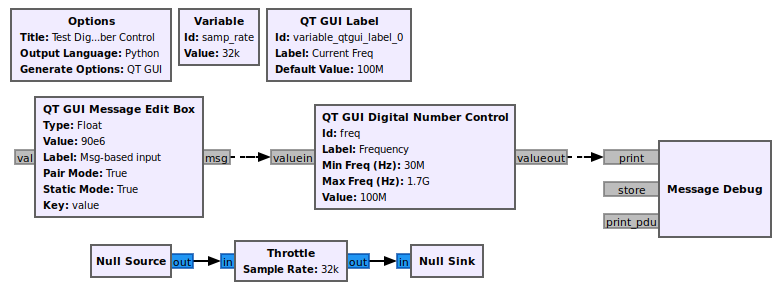Null Source: Difference between revisions
Jump to navigation
Jump to search
No edit summary |
(Clarified the difference between null source and constant source) |
||
| (One intermediate revision by one other user not shown) | |||
| Line 1: | Line 1: | ||
[[Category:Block Docs]] | [[Category:Block Docs]] | ||
A source of zeros used mainly for testing. If you | A source of zeros, used mainly for testing. If you want a source of constant values other than zero, try using the [[Constant Source]] block. | ||
== Parameters == | == Parameters == | ||
| Line 7: | Line 7: | ||
== Example Flowgraph == | == Example Flowgraph == | ||
When a flowgraph has no hardware devices, a Throttle is needed to limit the CPU utilization. Since the "main" data flow is via messages, the Throttle is fed with a Null Source. This file can be found at [https://github.com/gnuradio/gnuradio/blob/master/gr-qtgui/examples/test_digitalnumcontrol.grc] | |||
[[File:Test_dignum_fg.png]] | |||
== Source Files == | == Source Files == | ||
Latest revision as of 17:29, 19 July 2022
A source of zeros, used mainly for testing. If you want a source of constant values other than zero, try using the Constant Source block.
Parameters
None
Example Flowgraph
When a flowgraph has no hardware devices, a Throttle is needed to limit the CPU utilization. Since the "main" data flow is via messages, the Throttle is fed with a Null Source. This file can be found at [1]
Source Files
- C++ files
- TODO
- Header files
- TODO
- Public header files
- TODO
- Block definition
- TODO
